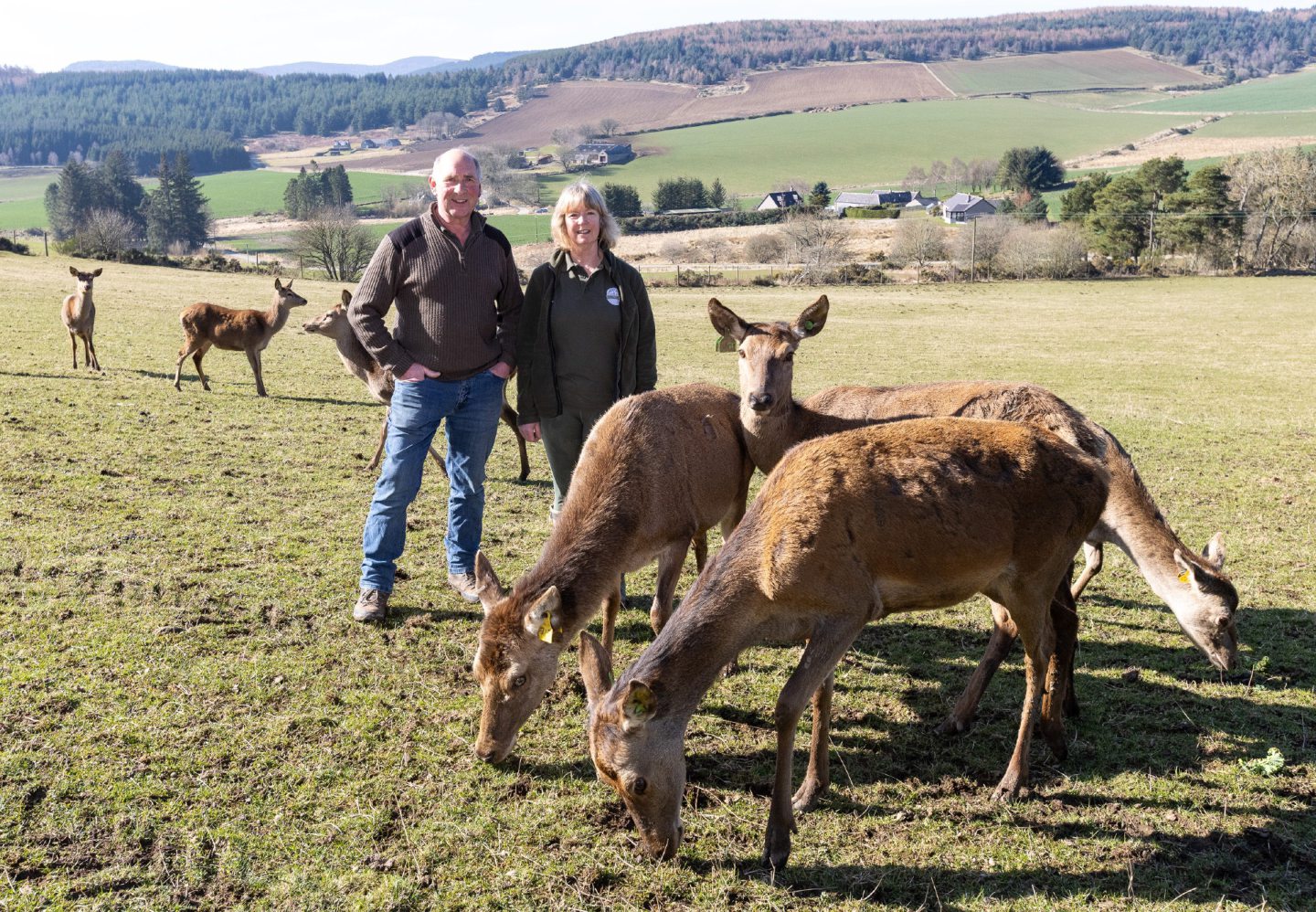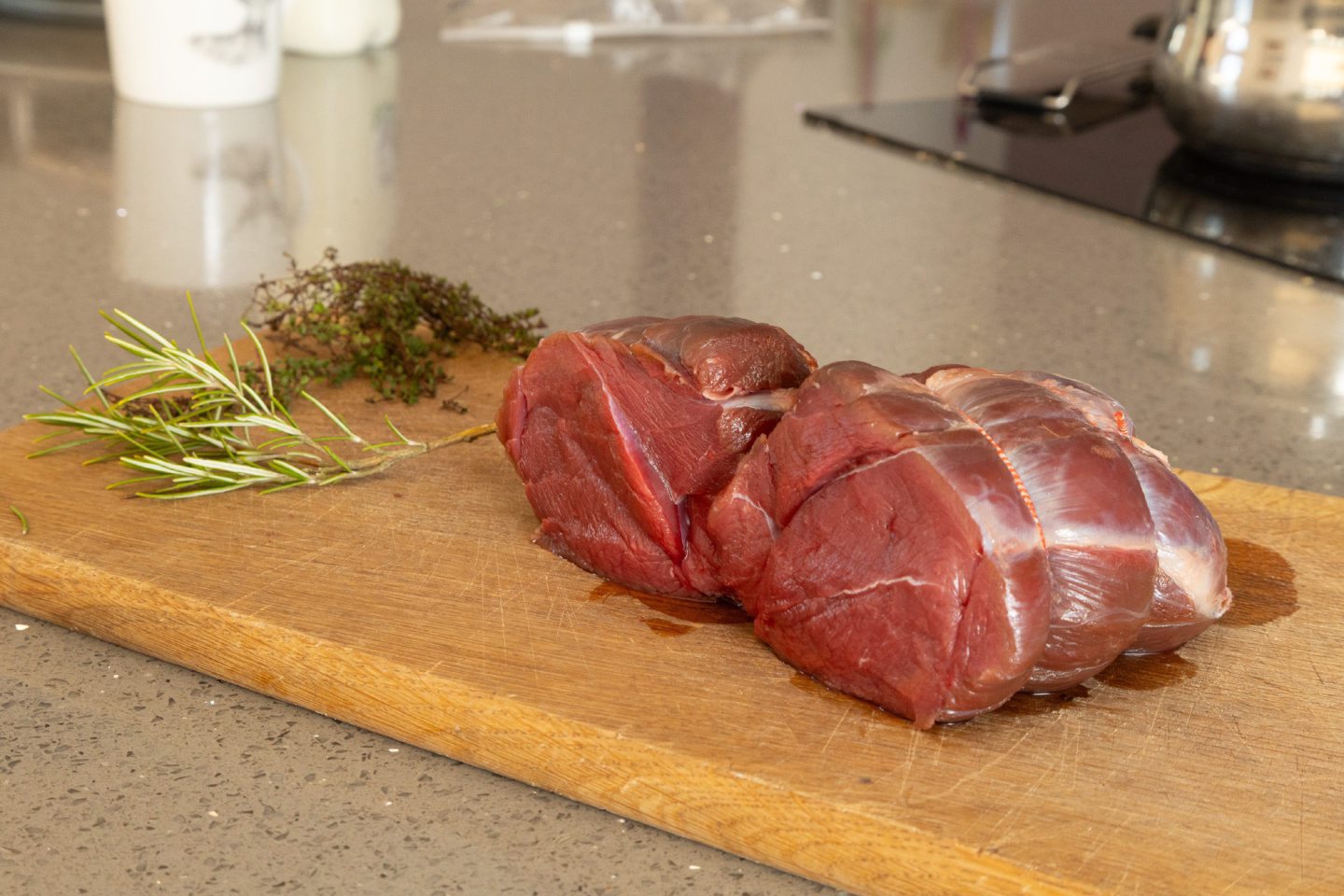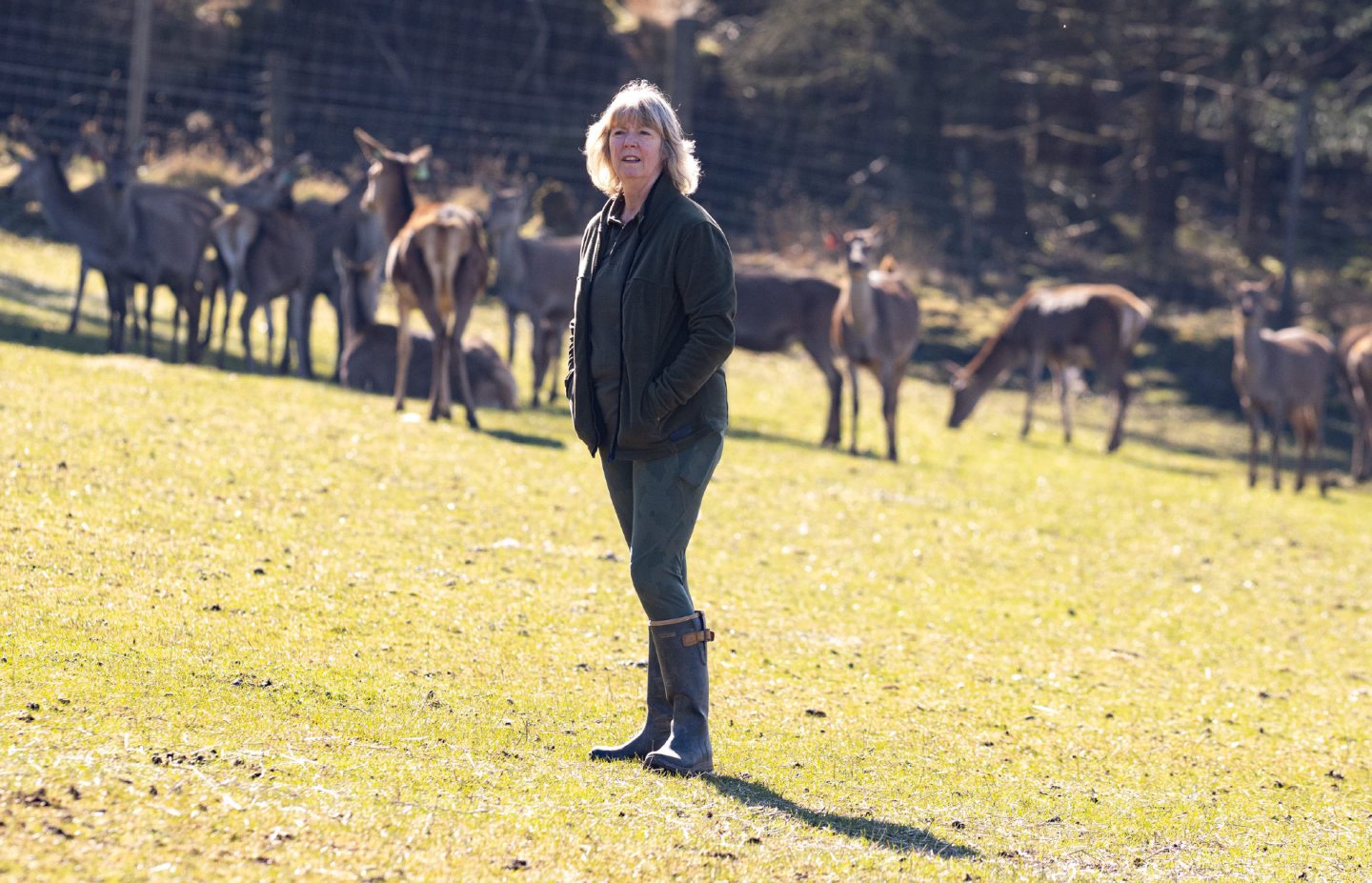Retirement plans usually consist of perfecting your golf handicap, proudly showing off the best garden in the neighbourhood, or involuntary babysitting sessions.
But for Janet Keith and her husband Willie, ‘retirement’ means something a little different.
In 2013 the couple in their 60s purchased Tullynessle Farm near Alford.
12 years on and they’re hoping to take the venison industry by storm.
Retirement is still a few years away for the couple who currently run family business Pitmachie Garage near Insch.
But they plan to spend their retirement running their Aberdeenshire venison farm full-time.
“We knew nothing about the industry years ago,” says Janet, 60.
“My husband is a farmer’s son and I had horses, but that was about all of our agricultural knowledge.”
Read on to find out:
- Why Janet believes we should eat farmed venison over wild venison
- What makes venison easy to manage
- Why Tullynessle farm was the ideal spot for their business
Deer a ‘fabulous’ retirement plan
Willie’s roots are quite literally tied to Tullynessle – his parents and grandmother were born in the area – so when the opportunity to return ‘home’ arose, it was fate.
“We weren’t really ready, and probably couldn’t afford it,” admits Janet.
“But it was such a beautiful spot. My husband’s family used to live in the area, and when we went to see it, we just fell in love.”
Having purchased the land in 2013, the house and farm were rented out separately for three years while the couple considered their production options.
In 2019 they moved into the farm permanently, selling their home to their son.
Following a feasibility study supported by the Scottish Government they opted to farm deer.
Thus, the venison venture began.
“We wanted something to do,” adds Janet.
“There is almost no handling with deer and they require less than two days maintenance per year. It fits well with retirement.
“They’re such resilient, healthy animals, it’s one of the things that makes them just fabulous.”
‘Everything about deer farming has been revolutionary’
Food Standards Scotland (FSS) have recently given their deer farm near Alford the green light for on-farm slaughter, making them just the second of its kind in Scotland. Janet says they can’t wait to get started.
“We want to make education and growth of the Scottish venison industry a real goal for the business,” she shares.
“We’re just so passionate about it, and it’s already taken off a lot faster than expected.
“Word is spreading.”
There are over 70 deer farms in Scotland, but with just one – Carmichael Estate in South Lanarkshire – that offers on-farm slaughter.
Such approval from FSS could see the industry grow exponentially.
“There’s a huge opportunity for growth,” Janet says.
“The venison industry is minuscule at the moment. It’s got a very small share of the £10.3 billion meat and veal market in the UK, [according to figures from Defra].
“There’s no abattoir in Scotland to farm deer, it’s all going to Pontefract, and only into the high-end supermarkets. We felt that was a bit unfair.”
As far as retirement projects go it’s a large commitment, but the sustainability involved does make the process far less demanding for the couple, as well as beneficial to consumers.
“It’s Scotland’s only native meat, they’ve adapted to live here better than any other livestock,” adds Janet.
“Their metabolism slows down in the winter, in tune with the grass growing, so they need less feeding.
“They don’t need antibiotics, and we’ve never fertilized our grass, meaning there are less chemicals in production.
“We have rotational grazing fields – we just move them around, and the grass comes back. It’s kind of free.”
Farmed venison have benefits over wild, argues venison farmer
With no route to market Janet is concerned by the amount of wild meat being consumed.
She believes there are benefits with farmed animals.
“Wild deer could have been feeding on anything: bracken, heather, bark,” Janet says.
“They could have grazed on a field sprayed with chemicals. You don’t know their welfare, you’re relying on the hunter doing it in a hygienic manner.
“But with farmed it’s consistently good.”
Tullynessle’s prime animals going to market are 22 months old, with age another unknown aspect with wild animals, she argues.
“People don’t know the difference between wild and farm.
“That’s one of our main goals, to educate and get the message out.
“People can’t make an informed decision about their food when they’re not informed.”
Even as a relative newcomer to the industry Janet was shocked by the lack of progress being made.
“It’s so surprising that there’s bigger farms out there with much more acreage and deer on site who haven’t done this,” she adds.
And even once they retire, Janet and Willie are determined to dedicate their time to putting Scottish venison on the map.
“We were on the sidelines for quite a while when nothing was going on,” she says.
“So now, whenever I get a chance to be that voice, I’ll shout it out.”
For more reading on vension:
‘Why eating wild Cairngorms deer is the right thing to do for our countryside’






Conversation